Western Conference preview: One burning question for each team

One of the more understated consequences of the 2011 collective bargaining agreement has been increased player movement during free agency, owing in large part to shorter contracts. With revamped rosters throughout the league and the increasing complexity of NBA schemes, training camp is more important than ever. After last week’s look at the East, here are burning questions for each team in the Western Conference.
Dallas Mavericks: Will the wings be healthy?
The Mavericks, at full strength, still have the talent and coaching to challenge for a playoff spot. The question is when (or whether) we’ll even have a chance to see them at that level.
Everyone knows about Wesley Matthews’ Achilles’ injury, but Chandler Parsons missed the end of the regular season, tried to come back for the Rockets series, and ultimately shut it down for surgery. What kind? Nobody will say, exactly. The Mavs’ official release stated he’s undergone a procedure “to repair cartilage,” but Parsons himself wouldn’t say whether it was microfracture surgery or not. A report by ESPNDallas indicated Parsons’ surgery was a hybrid microfracture surgery, where cells were taken from the bone marrow in Parsons’ hip and mixed with surgical glue to coat the injured area of cartilage in the knee. The hope is to promote regeneration of the damaged cartilage and promote more permanent healing than is seen in traditional microfracture, for which studies suggest decreasing results after about two years.
The hybrid procedure might make one a bit more optimistic about Parsons’ long-term future. Still, he had not yet begun running or cutting by the start of September, and his availability to start the season (to say nothing of his performance level) remains unclear. Also in question: How many minutes Parsons and Matthews can play once they are cleared. If those two can hit something approximating their previous levels of performance and minutes loads in short order, the Mavs could still make the playoffs. Deron Williams also is capable of playing some minutes at the two, but with rookie Justin Anderson (who did impress in summer league) and John Jenkins as the primary backup wings, it's hard to see the Mavs in the postseason if Parsons and Matthews miss significant time.
Denver Nuggets: The sophomores
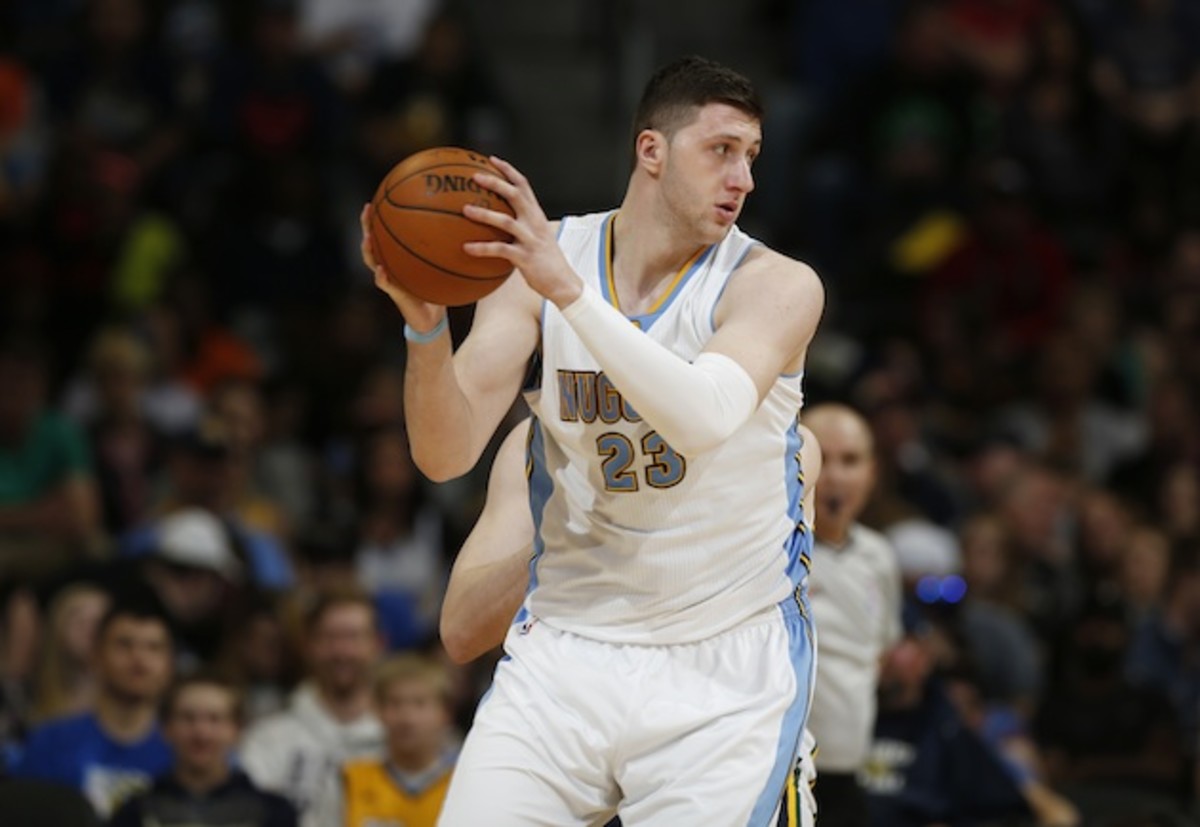
Jusuf Nurkic had an outstanding rookie year, displaying quick feet that belied his 280-pound frame, great effort on the glass, and some facility in the post. But he's also returning from a partially torn patellar tendon, a setback that hampered his offseason skill development. This is a critical season for Nurkic to establish himself as Denver’s center of the future, and he'll need to prove he's maintained the same quickness that helped make him such a standout last season. With new head coach Michael Malone having a lot of frontcourt options to sift through as he determines the right lineups and tempo for this roster, Nurkic can inform those decisions by showing he’s whole.
It's also a crucial year for second-year shooting guard Gary Harris. The No. 19 pick in 2014 played 719 minutes last season, most of them at far below replacement level, including a true shooting percentage of only 39.5 percent and a mere 20.4 percent from downtown. Harris always had a reputation as a shooter, but both his pro and college stats have largely betrayed that—at least so far. Harris must start hitting some shots if hopes to establish himself as a viable long-term option for the Nuggets at the two.
Golden State Warriors: Who's the backup center?
The biggest drama in the defending champs’ training camp has been off the court, with Harrison Barnes and Festus Ezeli eligible for rookie extensions. On the floor, the Warriors—with nearly their whole squad returning—have few pressing question marks.
Backup center may prove to be the biggest position battle, with Ezeli, Marreese Speights (who actually won the Warriors some games early in the 2014-15 season), newcomer Jason Thompson, and James Michael McAdoo all fighting for minutes. Coach Steve Kerr generally prefers a four who can shoot threes, which is why Harrison Barnes often gets those backup minutes.
The competition in camp will be especially important for Ezeli, whose agent continues to work on a long-term contract extension. Ezeli's personal stakes could rise even higher if no deal is struck, as he could wind up anywhere from the heir-apparent starting center to fourth-string by year’s end.
Houston Rockets: The return of D-Mo?
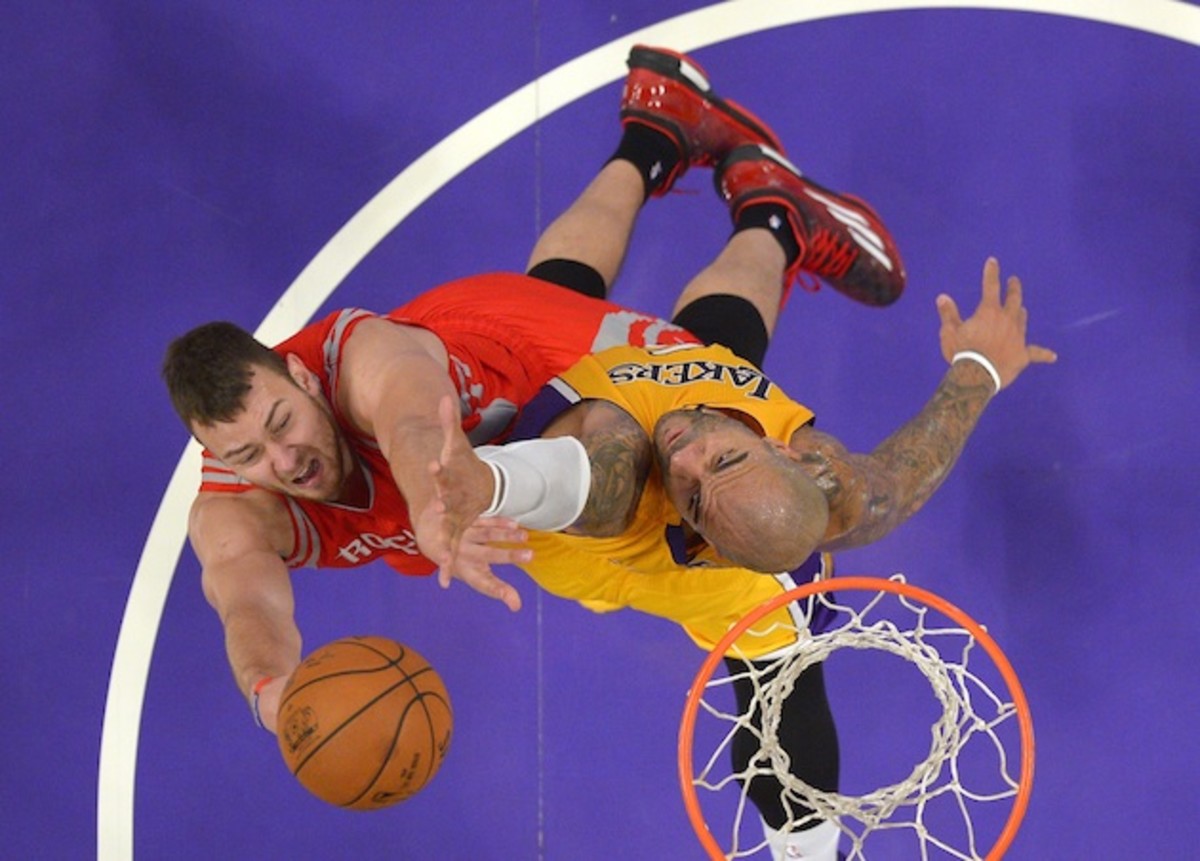
Coach Kevin McHale has stated that incumbent starter Patrick Beverley and newcomer Ty Lawson will compete for the point guard position, but I'd be shocked if Lawson doesn’t start. Instead, the biggest focus may be on Donatas Motiejunas, who currently is not on schedule to start training camp as he continues to recover from a lumbar microdiscectomy in April.
In his absence, watch for K.J. McDaniels or rookie Sam Dekker to try to push their way into McHale’s rotation. Both young players have the physical credentials to play some stretch four in smallball units — a look McHale didn't frequently employ a year ago, when his power forward depth exceeded that on the wing.
Los Angeles Clippers: Starting Small Forward?
Paul Pierce clearly is the best of the group, which also includes the enigmatic Lance Stephenson and Wesley Johnson. But with Pierce turning 38 on Oct. 13, the aging star's minutes likely will be limited and he probably isn’t up for defending star wings anymore. Stephenson is the best defensive option among the group (when he's locked in), but his shooting and decision-making could be an issue with the other starters. Johnson has been discussed, but he really isn’t a starting-quality player, and is better as a smallball four anyway.
In an ideal world, Stephenson would win the job and be the reliable two-way contributor he's always had the potential to be, but that's hardly a guarantee coming off one of the worst shooting seasons in NBA history. If Johnson really does end up seeing major minutes in a Keith Bogans-type starting role, his offensive limitations could strangle the spacing for what has been the best starting unit in basketball over the last two years.
Los Angeles Lakers: Young Gun Starters?
After striking out early in free agency, the Lakers did well to pick up Roy Hibbert, Lou Williams, and Brandon Bass. But the future beyond 2016—along with their ability to attract free agents in the coming years—depends on developing their young talent. Jordan Clarkson, Julius Randle, and No. 2 overall pick D’Angelo Russell need to prove their potential as high-level players this season.
Nevertheless, Byron Scott is not the type to hand out entitlement minutes, and he could well be coaching for his job. If Russell or Clarkson can’t beat out Williams (who is more of a sixth-man type), and Randle comes off the bench behind Bass, it may not bode well for the Lakers’ youth movement.
Minnesota Timberwolves: Who is Going to Play?
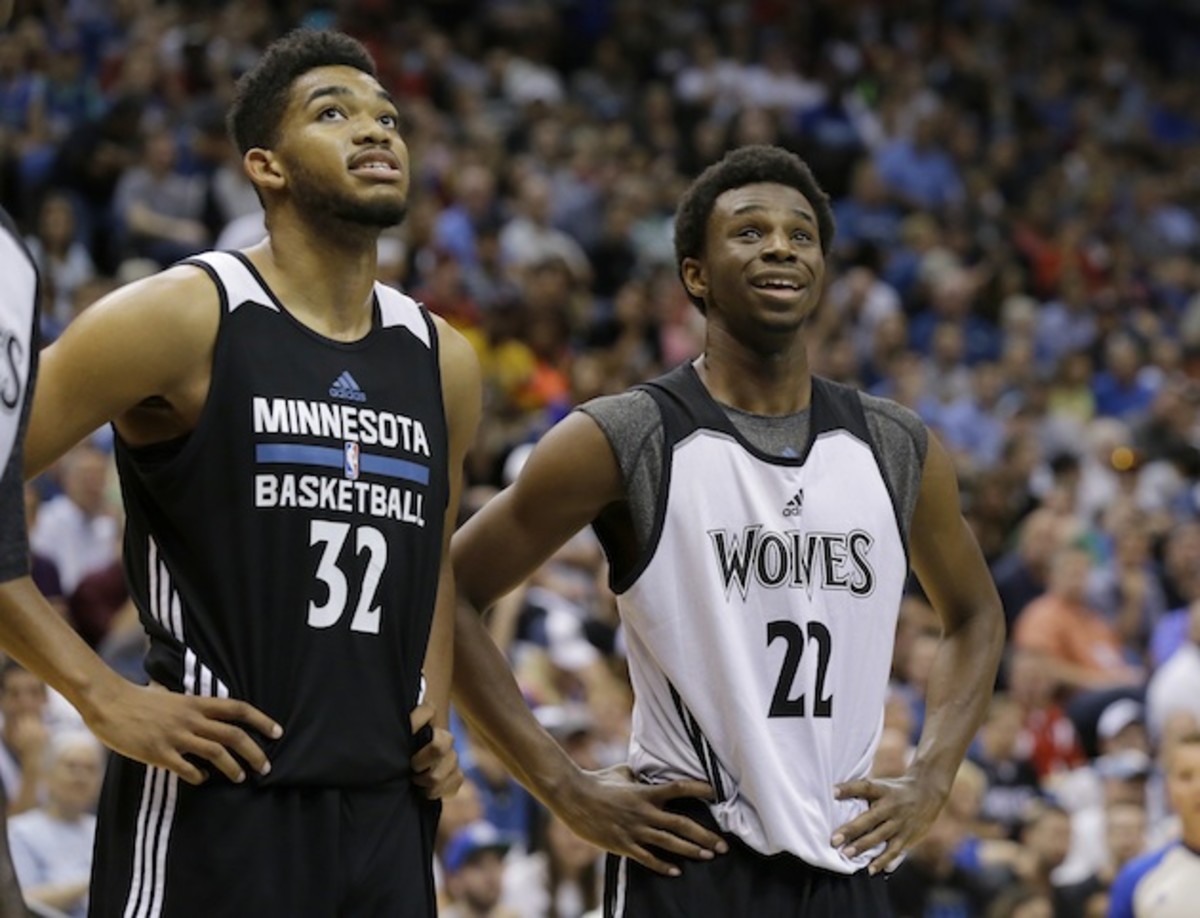
It's fairly standard for a team coming off a poor season to have major questions about its rotation; rare is the cellar-dweller that actually has toomany options. Yet that is where the Wolves find themselves. Minnesota is overrun both with established veteran rotation players and young players with enough pedigree to theoretically merit significant time.
At center, there’s Karl-Anthony Towns (the No. 1 overall pick in June), Nikola Pekovic (who makes $12.1 million this year), and 25-year-old Gorgui Dieng (who averaged 30 minutes, with a 17.3 PER, last year). Also, before his leave of absence due to cancer treatment, Flip Saunders said that legend Kevin Garnett would start at power forward (even though KG’s best position these days is probably center).
Backing up Garnett at the four is Adreian Payne (the No. 15 overall pick in 2014), who started in Garnett’s absence down last season's stretch. Confusing matters even more, power forward also is the ideal offensive position for Nemanja Bjelica, the 27-year-old reigning Euroleague MVP who joined the team this summer. The Wolves already bought out former No. 1 overall pick Anthony Bennett, in part due to the roster crunch. (The need to make a decision on a $7.3 million team option for 2016-17 by Nov. 2 also was an impetus.)
Small forward looks like a lock for No. 1 overall pick Andrew Wiggins, but former lottery selection Shabazz Muhammad flashed offensive potential last year with a bullying post game and 39 percent shooting from deep. Bjelica should be in the mix there, as well. Saunders (as GM) also signed veteran forward Tayshaun Prince, whom he knows well from their days in Detroit.
Wiggins may also log some time at shooting guard, where veteran Kevin Martin (whose shooting the Wolves figure to need) and 2014 No. 14 overall selection Zach LaVine will likely receive the lion's share of minutes. LaVine thrilled dunk contest fans and daily fantasy players a year ago (while posting one of the NBA’s worst advanced-statistics seasons), and a developing franchise like Minnesota would surely like to find some minutes for him to gain more productive experience.
Minnesota's point-guard situation remains fairly clear, for now. Ricky Rubio (the subject of some trade rumblings) is the starter as he begins a four-year, $54 million extension. Andre Miller and first-rounder Tyus Jones will vie for backup minutes.
However, depth does not a good team make; the Wolves still suffer from a dearth of shooting, and Rubio at the point means they need even more from the other positions. Only Rubio and Garnett have a proven combination of the experience and talent to defend at an above-average level, though Wiggins could get there as soon as this season. Minnesota's young players, while talented, likely are not ready to play winning basketball yet, but the rotation battles should be fascinating.
Memphis Grizzlies: Young Talent?
Although they've drafted late in the first round — or not at all — in recent years, it remains a bit sobering that Marc Gasol and Mike Conley are the only homegrown players projected to be in the Grizzlies’ rotation. Sophomores Jordan Adams and Jarnell Stokes, together with this year’s No. 25 overall Jarrell Martin, have a chance to change that this season, but none have enjoyed a very auspicious start.
Adams showed flashes the last two summers, but played a mere 248 minutes in 2014-15 and underwent minor knee surgery for an undisclosed issue in August. Stokes was a favorite of statistical models in the 2014 draft, and his D-league performance (62 percent shooting and excellent rebounding in 737 minutes) bodes well. Still, he played even less than Adams a year ago, and as an undersized power forward, he does not project well defensively. Martin, meanwhile, has started his career with two foot injuries, the latest of which should sideline him to start the year.
Memphis will need these young players to augment its aging core if it hopes to maintain even pseudo-contender status in the West going forward.
New Orleans Pelicans: At Full Strength?
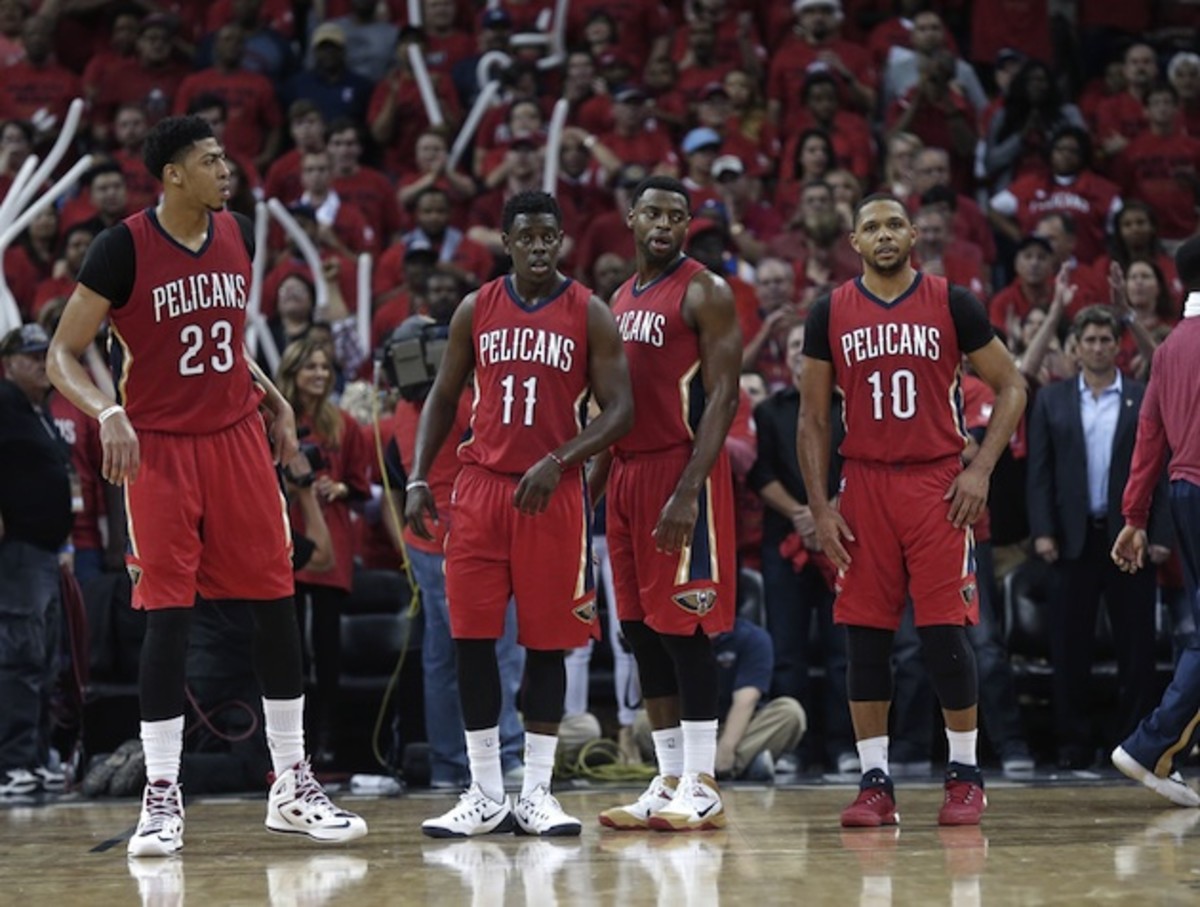
Despite a somewhat underwhelming summer outside of their coaching hires, the Pelicans are dripping with potential this year. Already a top-10 offense, the hope is Alvin Gentry and prized defensive assistant Darren Erman can get a talented group of players into the top 10 on that end, as well.
The greatest impediment to the Pelicans’ hopes this year will be health. Jrue Holiday has struggled with a stress reaction in his lower right leg the past two seasons, and likely will be bound by a significant minutes limit through January. Quincy Pondexter, a savior for the team a year ago, also had an underpublicized knee surgery in May. He may not be ready for camp, particularly after addressing that “laundry list of things that we had to get fixed. Ryan Anderson and Tyreke Evans also have been beset by injuries in recent years, including Evans during the first-round playoff loss against Golden State. If the Pelicans can’t have a healthier year, the coaching change may not matter.
Oklahoma City Thunder: KD in MVP Form?
While the Thunder have some young players whose progress many are eager to gauge, perhaps the biggest question in the entire league will be the effectiveness of Kevin Durant after nearly a year on the sidelines. The good news: reports indicate that all systems are go. Lest we forget, Durant was unbelievable two years ago — far better than any player in 2014–15. The 2014 MVP understandably said he still thinks he is the best in the world.
Durant looked as good as ever during his healthy cameos last season. While the potential for a recurrence exists, there's little reason to think the Jones fracture should hinder him on a day-to-day basis. Nevertheless, the missed development time could have subtle effects on his game.
Ironically, Durant’s return to form could be a major determinant in whether he stays in Oklahoma City after 2016. The better he plays, the further the Thunder go, and how the team finishes could be a huge factor in his decision as a free agent.
Phoenix Suns: Can T.J. Warren make a leap?
The Markieff Morris trade request (followed by an apparent retraction at Monday’s media day) could remain a story, but perhaps the bigger long-term question is whether Phoenix's rebuilding project will finally begin bearing fruit. None of the Suns’ recent first-rounders have had much of an impact, although that could easily change his year.
T.J. Warren was buried behind the Suns’ many wing options a year ago, but performed well when given a chance. He followed that with a man-among-boys summer league, and certainly is more talented than incumbent small forward P.J. Tucker. Unfortunately, his mediocre defense and shooting make him a tough fit with the starters.
Despite that, the former North Carolina State standout remains Phoenix’s best hope for a star on the current roster. Warren is a fantastic finisher and cutter, possessing an almost preternatural array of floaters and double-pumps when he gets inside. The hope is that he'll look so good that head coach Jeff Hornacek will be forced to start him, despite the potentially awkward fit.
Portland Trail Blazers: Who Starts Beyond Damian Lillard?
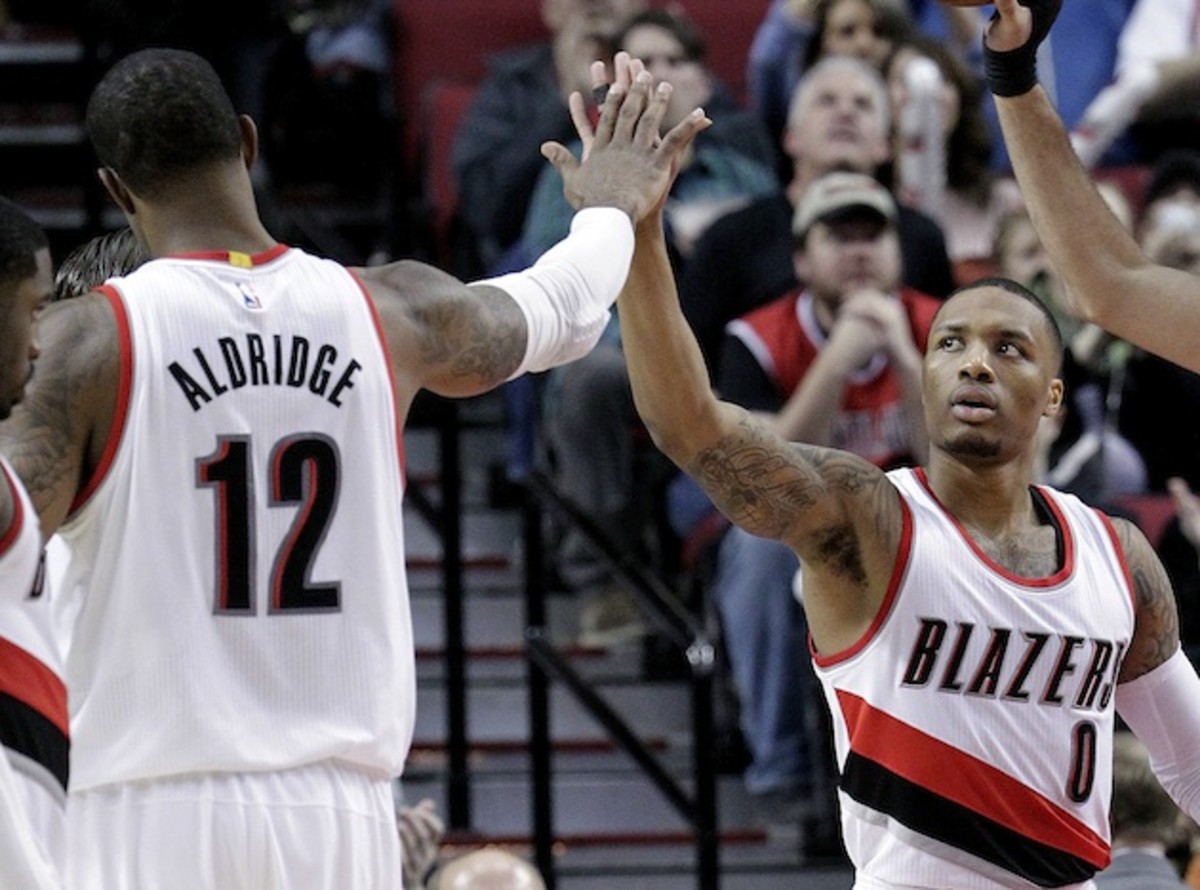
Of all the catastrophic injuries in recent years, perhaps none has prompted more personnel turnover than Matthews’ torn Achilles’. Until March 6, the Blazers had one of the most stable starting units in the NBA. Now, only one starter remains, with four positions in precarious flux.
C.J. McCollum, who emerged in the Blazers’ desultory playoff series loss to Memphis, has the most potential at the two, but he'll need to prove his scoring streak at the end of the year was more than just a good run of shooting luck, and that he can reliably defend on the wing. Gerald Henderson is a rugged defender, but comes off a second hip surgery in July and has never shot better than 35 percent from three, even on a very low volume of attempts.
Henderson also could be in the mix at small forward. There he'll be joined by Al-Farouq Aminu and his new four-year, $30 million contract. Aminu also can’t shoot, though, and while he defends the wing well, he is better offensively as a big. Then there's Moe Harkless, acquired for nothing from the Magic, who will look to resurrect his once-promising career.
The Blazers have five established bigs, although most skew more toward the five than the four. Mason Plumlee, Meyers Leonard, and Chris Kaman (a veteran trade or buyout candidate) are centers defensively. Ed Davis, owing to a limited shooting range, also is best slotted at center. Noah Vonleh has more of a power-forward skillset in theory, but he only just turned 20 in August.
It will be very interesting to see who emerges out of these scrums, especially in the frontcourt. The Blazers are hoping McCollum, Aminu, Vonleh, and Leonard can merit large roles, as they have the most long-term potential for a team suddenly forced into full-on rebuilding mode.
San Antonio Spurs: What Does Parker Have Left?
The Spurs are coming off one of the best offseasons in recent memory. Masterful cap management (and the largesse of Tim Duncan, who was willing to return at a salary about $15 million per year less than his market value) allowed San Antonio to utilize the low cap holds of Kawhi Leonard and Danny Green to land LaMarcus Aldridge on a maximum contract before the two wings re-signed. Throw in the below-market return of Manu Ginobili, and David West opting out of his $12 million deal in Indiana to sign for the minimum, and the Spurs appear absolutely loaded.
Unfortunately for San Antonio, their one weakness may be at a position of traditional strength, with Tony Parker finally beginning to show his age. The 33-year-old floor general has held on to star status admirably, and long beyond when normal aging curves suggest a decline. Last year, though, finally saw Parker take a major step back.
Long one of the league’s best in the paint (at any position), Parker’s percentage of shots at the rim declined precipitously from the low 30s to only 26 percent last season (his free throw rate also cratered). A big culprit was the loss of Parker's typical transition burst; he used to be good for about two or three one-man fast breaks per game. Meanwhile, his defense has declined to the point where he needs to be hidden from any solid opposing point guards — a task that proves difficult against playoff rivals like the Warriors and Clippers, who boast multiple threats on the wing.
Parker had an awful series in the Spurs’ loss to the Clippers a year ago, compiling a mere 6.5 PER. While some wrote it off as little more than the struggles with his notoriously balky hamstring, Parker fared little better against even weaker competition at the recently completed Eurobasket.
Fortunately, San Antonio has one of the league’s best backups in Patty Mills, though Mills is more marksman than playmaker. With the 38-year-old Ginobili likely to take even more of a back seat to Leonard and Green this year, the Spurs may find themselves with a deficit of perimeter playmaking if Parker somehow can't recapture some of that old magic.
Sacramento Kings: Karl’s Style?
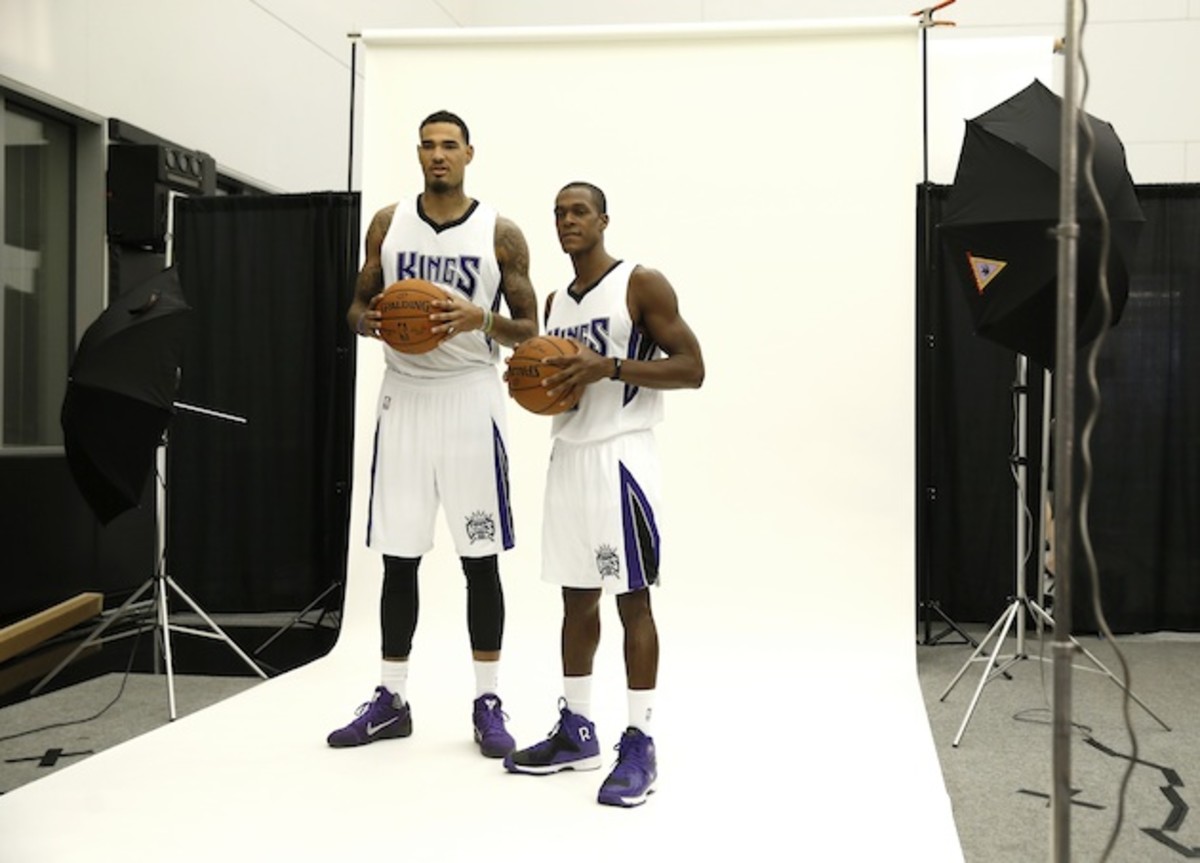
The Kings reportedly moved on from Mike Malone early last season due to a conflict over preferred tempo. George Karl was hired, at least in part, due to his preference for pace, having embraced a decidedly up-tempo style for much of his career.
On the other hand, the Kings drafted center Willie Cauley-Stein, then signed center Kosta Koufos and point guard Rajon Rondo. Of the summer’s signings, only Marco Belinelli would seem to fit the ideal of playing faster. Rondo has never really run a fast offense, and placing another center next to DeMarcus Cousins (even though Cauley-Stein runs the floor well) doesn't foot with the kind of smaller, quicker lineups that tend to typify uptempo systems.
As such, Karl’s rotations will be something to watch this year. With Rudy Gay, Omri Casspi, Ben McLemore, Belinelli, and Darren Collison, Sacramento has the personnel to effectively play small around Cousins. Without a traditional power forward on the roster, the choice to play small or with another center next to Cousins will be a stark choice indeed.
Utah Jazz: Hood or Burks?
Rodney Hood was an underrated key to Utah’s second-half surge. Hood provided essential spacing with 37 percent shooting from downtown, taking nearly half his shots from that range. The Duke product also showed competence in the pick-and-roll that belied his height and limited pro experience.
Alec Burks received a four-year, $42 million extension last fall that kicks in this season, but struggled mightily with a shoulder injury before succumbing to surgery in January. Burks’ forte is attacking the rim; he had shot well over 60 percent at the basket for his career until last year, when the shoulder basically made using his left hand impossible. Burks has shown flashes of ability from deep as well, but he doesn’t have Hood’s pure shooting touch.
Overall, Hood probably is the best fit with Utah’s traditional two-big starting lineup, due to his spot-up shooting ability, but Burks also will be essential as a de facto playmaker with Dante Exum out for the year with a torn ACL.

